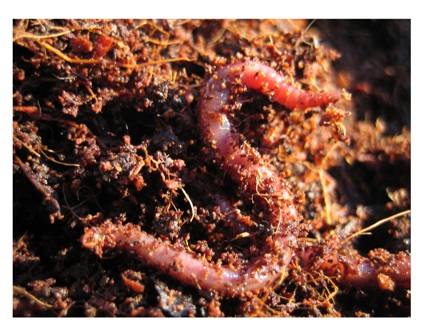Vermiculture technique is based on the use of some species of earthworms to convert organic waste into vermicompost. In the process, earthworms not only used by microorganisms that grow in the waste for their nutrition, but also conducive to microbial activity in the vermicompost produced. The earthworm species most commonly used in vermiculture are Eisenia foetida, Eisenia andrei, Eisenia = Dendrobaena veneta and Lumbricus rubellus horticultural in temperate climates, and Eudrilus eugeniae, Pheretima Perionyx hawanya excavatus and in the tropics.
All vermicomposting systems require maintenance at temperatures below 35 º C, so it is important to avoid high temperatures. Organic waste should be added into fragments of 2.5 cm at frequent intervals. It is important to keep the temperature between 15-25 º C and moisture content should be between 80% - 90% (range 60% - 90%). The ammonia content should be low (0.5 mg / g) and salt content must also be low (0.5%).
Vermicomposting systems include batteries outdoor or indoor systems, cots, batch systems outdoors or indoors or vermicomposting reactors continuous flow. The vermicompost can be used as growth substrate for plants and soil in the greenhouse or field. Increases seed germination, growth, flowering and yield dramatically. Also the extract, called "tea" can be used for irrigation or sprayed on plants. Promote plant growth, regardless of nutrients due to plant growth regulators produced by microorganisms that are adsorbed by humates (indoleacetic acid, gibberellin, kinetin, humates and fulvatos).
Earthworms can be a source of protein in feed for fish, chickens and piglets. They contain essential amino acids (60-70%), fats, carbohydrates and vitamins such as vitamin B 12. Earthworms are mechanically separated from the vermicompost and processed by drying. The effectiveness and economics of using earthworm protein for animal feed in different parts of the world will be discussed in detail.
The vermicompost can be used in bioremediation of organic pollutants and heavy metals. Microbial degradation of organic pollutants dramatically accelerates and heavy metals are immobilized together with humic substances that form, so are not available to plants and thus there is no poisoning or death of them.
Earthworms have been used, mainly in China, as pharmaceuticals for the relief of animal and human diseases. As a result of its porous cuticle and way of life in the soil, produce enzymes as protection mechanisms, and some of these enzymes, when removed, can influence the development of human diseases, especially tumors and cardiovascular diseases such as clotting blood, thus giving earthworm extracts considerable potential in medicine.
Fuente: Clive A. Edwards & Norman Q. Arancon; Soil Ecology Laboratory, The Ohio State University, Columbus, Ohio, U.S.A., 2007.

